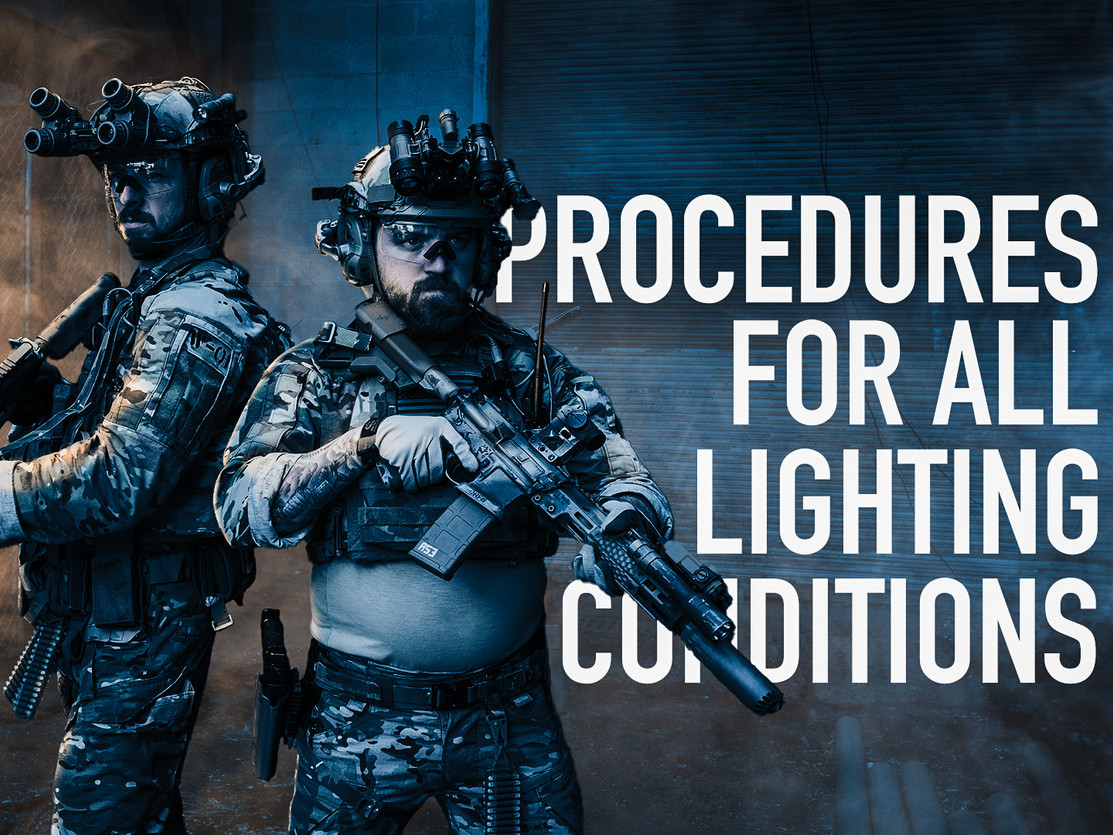Posted by Tim Marshall on May 14th 2024
Mastering Preparedness: Training For All Lighting Conditions
There needs to be a discussion about a crucial aspect of tactical training that is often overlooked: the ability to operate effectively in different lighting conditions. It's not enough to be proficient in the daytime under perfect conditions. In the real world, threats don't care if it's bright and sunny or pitch black. We need to be ready for anything, anytime.
Let's break it down. Imagine you've spent countless hours honing your skills, but all that training has been in broad daylight, with favorable conditions. You might feel confident, thinking, "I know how to handle my rifle," or "I've got my team tactics down pat." But what happens when the lights go out? Are you suddenly rendered ineffective? That's not a position any of us want to be in.
Consistency is key in our line of work. Just like in close-quarters battle (CQB), where the same principles apply whether you're a solo operator or part of a larger team, our procedures should remain constant regardless of lighting conditions. We can't afford to have a different playbook for every scenario. That's a recipe for confusion and, ultimately, failure.
So, how do we bridge the gap between day and night? It starts with embracing tactile awareness. In my training, I emphasize the importance of relying on touch rather than sight, especially in low-light situations. Whether it's loading your weapon or communicating with your team, being able to navigate tasks by feel alone can make all the difference when visibility is limited.
A perfect example of this universal procedure is load and make ready. While loading the rifle in the dark, one may be thrown off and make mistakes. A surefire way to practice this load and make ready so that you are prepared in any environment is to feel the top round of the magazine and know whether it is on the left or right side. Then, load the magazine, drop the bolt, and remove the magazine. Feel the top round again and ensure it has switched to the opposite side. This procedure is a confident way to check that you are loading your rifle properly, even if you can't see a thing.
Communication is another critical piece of the puzzle. That's where "barrel releases" come into play. This simple yet effective method allows us to signal readiness to our teammates using a gross motor movement of our rifle either over the shoulder or under the arm. This movement is easily visible, even in darkness or under night vision. Compared to barrel wags, a commonly used signaling technique, barrel releases are hard to confuse as anything other than a signal to your buddies. It's all about keeping the lines of communication open, no matter the circumstances.
Now, I'm not just here to preach. I want to challenge you to take a hard look at your own readiness. Are you prepared to operate in any lighting condition, or are you only comfortable when the sun's out? If it's the latter, it might be time to consider some additional training.
In closing, remember this: the fight doesn't adhere to a schedule. It doesn't care if it's day or night. It's up to us to be ready, no matter what. So let's embrace the challenge, hone our skills, and master the art of tactical preparedness in all its forms. Our safety and the safety of those we protect depend on it.

